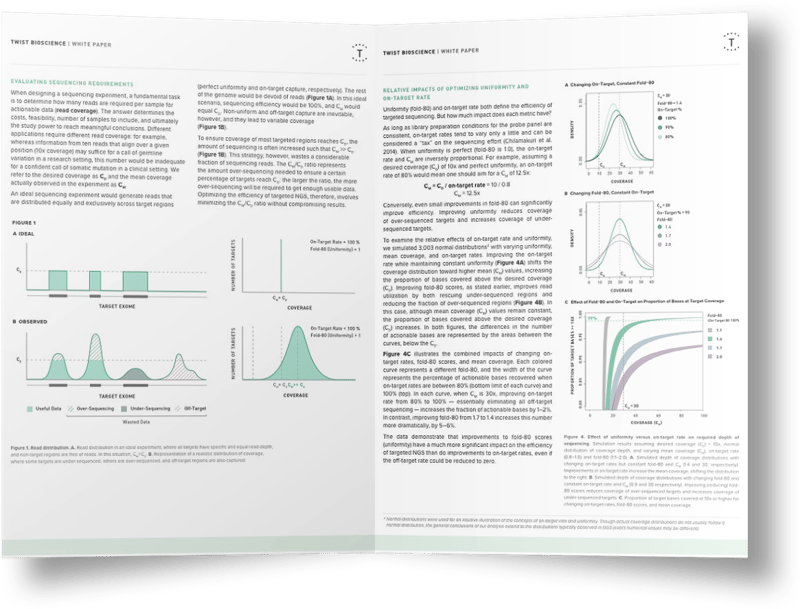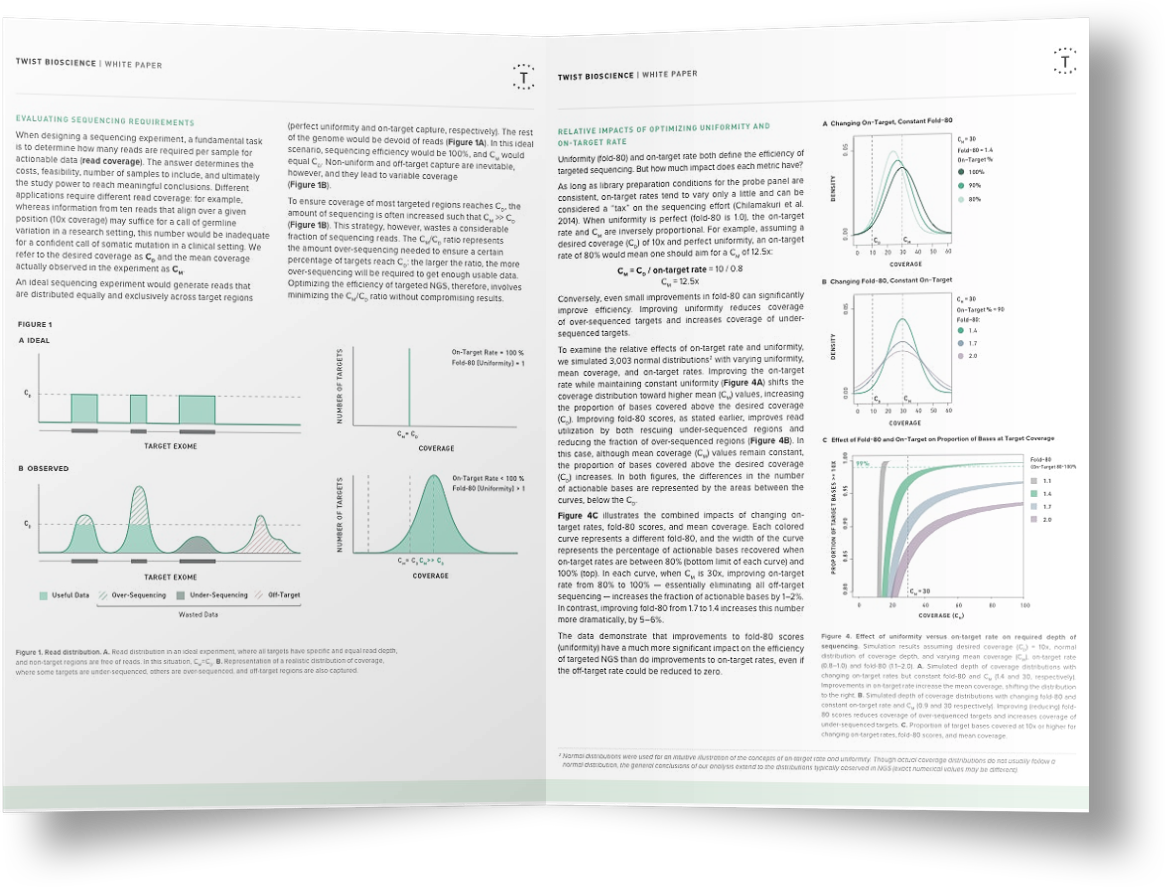
WHITEPAPER
The Importance of Coverage Uniformity Over On-target Rate for Efficient Targeted NGS



Next-generation sequencing (NGS) has become the technique of choice for variant detection in both research and clinical settings. Targeted sequencing relies on enrichment of genomic regions of interest prior to sequencing. Although this can make experiments more focused, it also introduces biases that compromise the efficiency of the sequencing.
While some inefficiency is unavoidable, much is inherent to the design and production of target enrichment probe panels. The extent of this “wasted sequencing” is reflected in the uniformity and on-target rate, two metrics that describe the overall efficiency of targeted sequencing.
Download this whitepaper to discover:
- What uniformity and on-target rates are
- The relative impacts of optimizing these metrics
- Why uniformity is more important than on-target rate